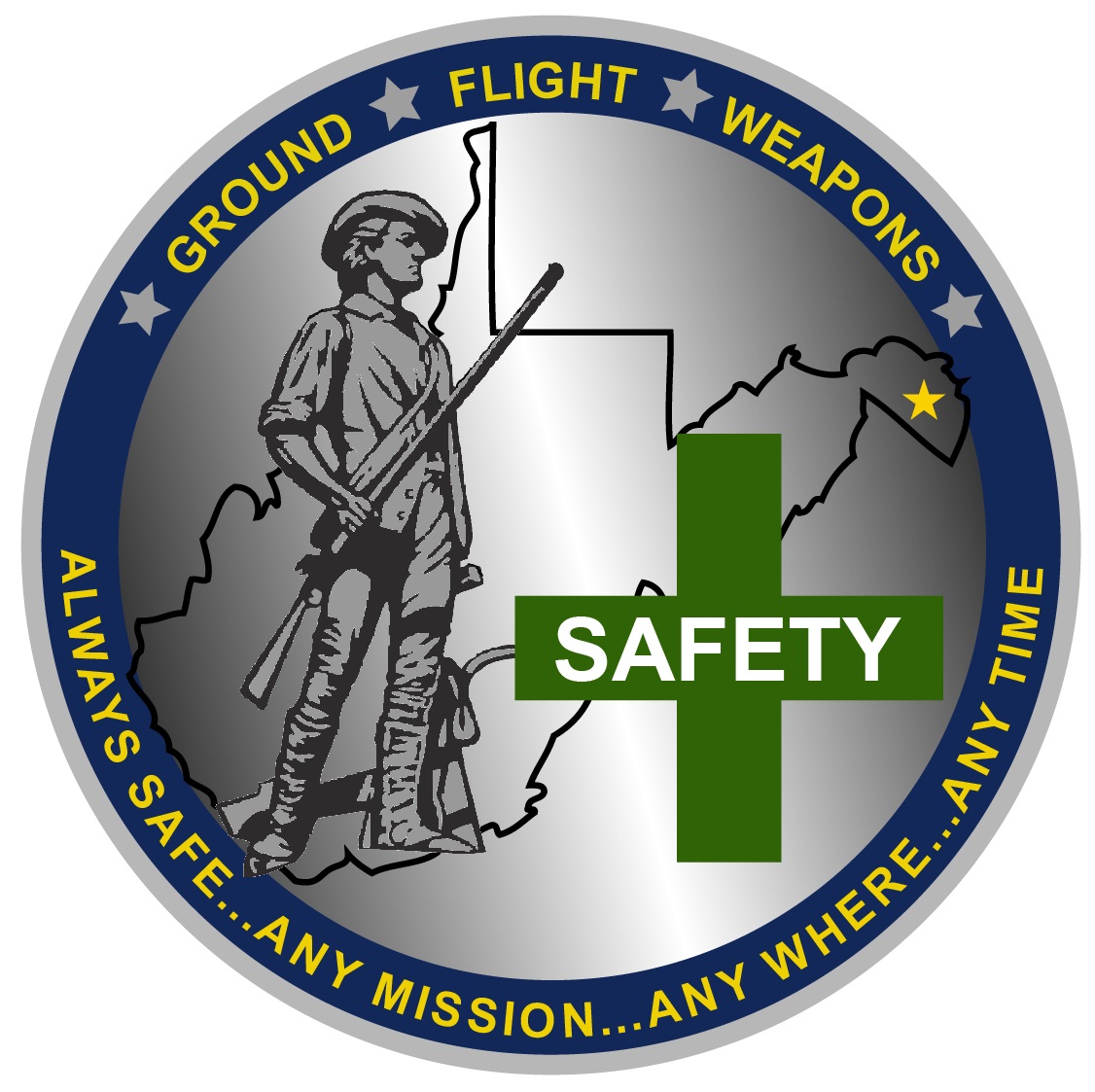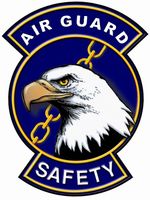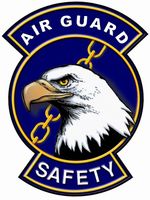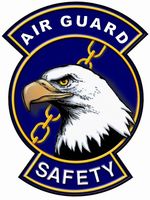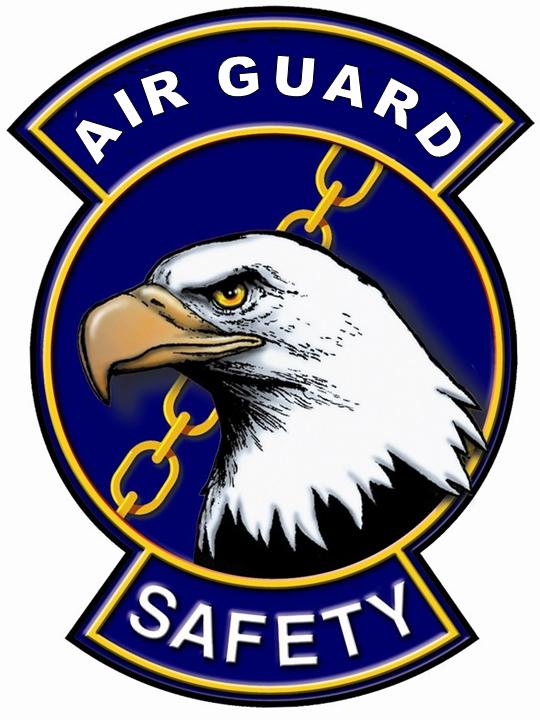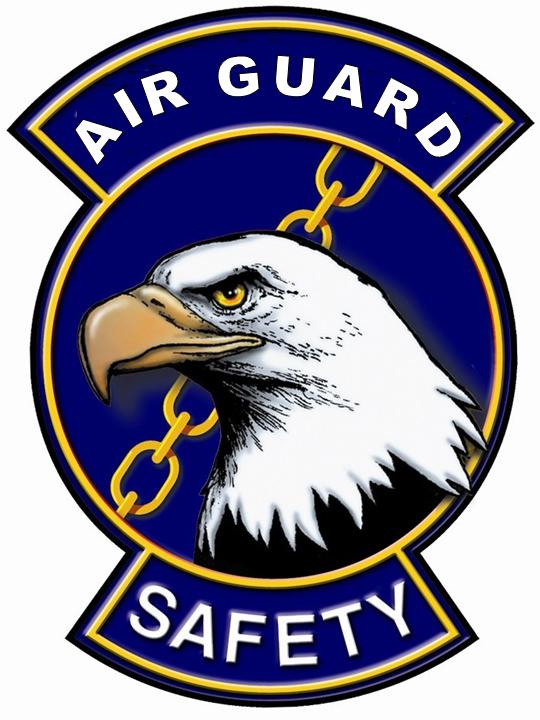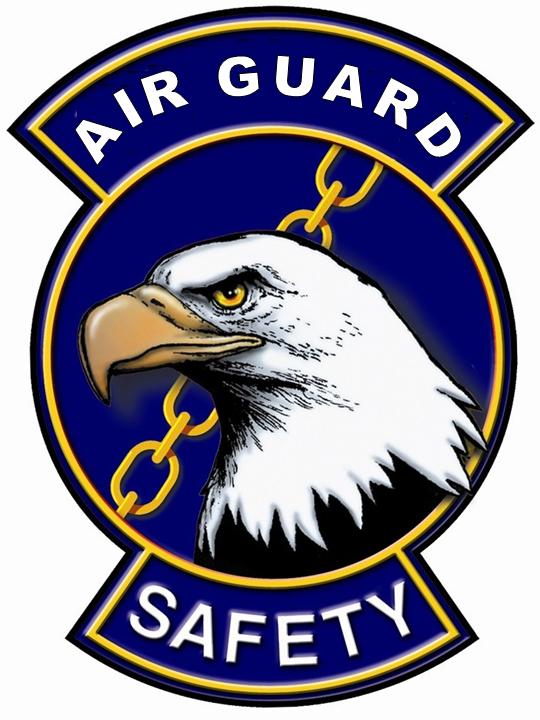Information
-
Audit Title
-
Squadron
-
Conducted on
-
Inspector
-
Location
-
Supervisor
25.21. Civil Engineering Checklist
-
Are lines completely drained of existing air prior to opening compressed air lines and are new lines completely secured prior to air entry into the system? AFI 91-203 para. 25.6.5
-
Are the front bucket (if so equipped) and outriggers of a backhoe in fully-down positions before digging is attempted? AFI 91-203 para. 25.12.1
-
Is the entire area where the backhoe digging arm may swing cleared of personnel? AFI 91-203 para. 25.12.1
-
Is backhoe operation under energized lines permitted only when absolutely necessary and are these operations approved by the commander? AFI 91-203 para. 25.12.1
-
During travel to and from worksites, is the backhoe completely folded, secured and centered? AFI 91-203 para. 25.12.1
-
During mobile crane operation, is a person appointed to provide signals to the operator? AFI 91-203 para. 25.12.2.3.2
-
Before leaving a crane unattended, are all shutdown procedures performed? AFI 91-203 para. 25.12.2.3.5
-
Are crane load weights determined before lifting? AFI 91-203 para. 25.12.2.4.1
-
Are crane outriggers, when required, set before lifting, telescoping the boom or turning a load within the ratings? AFI 91-203 para. 25.12.2.4.1
-
Are loads transported on cranes specifically designed for this purpose? AFI 91-203 para. 25.12.2.4.2
-
Are crane outriggers used, regardless of the load, when the ground is soft or otherwise unstable? AFI 91-203 para. 25.12.2.4.12
-
When two or more cranes are used to lift one load, is one person designated as the responsible individual? AFI 91-203 para. 25.12.2.4.14
-
Are normal routes for assigned cranes designated and approved by safety? AFI 91-203 25.12.2.5
-
Are required safety measures such as securing the empty hook, attaching warning flags (as necessary), etc., taken before the crane is moved to a new job site? AFI 91-203 para. 25.12.2.5
-
Are all parts of the crane and load restricted within 10 feet of an energized power line? If this is not practical, is the line de-energized and visibly grounded? AFI 91-203 para. 25.12.2.7.2
-
Are additional clearances assured for work near lines greater than 50 kV and are they listed on AF Form 103, Base Civil Engineering Work Clearance Request? AFI 91-203 para. 25.12.2.7.3
-
Is a permanent sign posted within the crane cab warning of electrical power line dangers and restrictions? AFI 91-203 para. 25.12.2.7.4
-
Is an approved fire extinguisher kept in the crane cab? AFI 91-203 para. 25.12.2.10
-
Are dump trucks operated within the load capabilities established by the manufacturer and consideration given to the specified weights of the material being carried? AFI 91-203 para. 25.12.3
-
If dump truck loads pose a flying debris hazard is the load covered with a tarp or similar covering? AFI 91-203 para. 25.12.3
-
Before dumping the vehicle‘s load, do operators check overhead clearance both directly over the vehicle and ahead of it in the direction to be traveled while the body is still raised? AFI 91-203 para. 25.12.3
-
Are sweepers operated on airfields in direct contact with control tower or escorted by a vehicle that is? AFI 91-203 para. 25.12.7
-
Is a good water supply maintained during concrete saw operations? AFI 91-203 para. 25.12.9
-
Are proper lifting techniques used during pavement breaker (jackhammer) operation and transport? AFI 91-203 para. 25.12.10
-
Are concrete mixers supported in stable positions prior to operation? AFI 91-203 para. 25.12.12
-
Are kettles operated only if FES Flight approval has been obtained? AFI 91-203 para. 25.12.14.1
-
Is an appropriate fire extinguisher available near the kettle? AFI 91-203 para. 25.12.14.5
-
Are kettles watched closely to ensure the safe heating temperature specified by the product manufacturer is maintained during heating? AFI 91-203 para. 25.12.14.6
-
Is material eased into the kettle to prevent splashing? AFI 91-203 para. 25.12.14.6
-
Are open flames or other sources of ignition not permitted near material heated to its flash point? AFI 91-203 para. 25.12.14.7
-
Are air supply lines marked or tagged to identify the maximum psi on the lines? AFI 91-203 para. 25.12.17.1
-
Are woodworking machines shut down, locked out and tagged during maintenance? AFI 91-203 para. 25.13.2.1
-
When machine guards are removed for authorized maintenance, is the machine locked out and tagged? AFI 91-203 para. 25.13.2.1
-
Are industrial ventilation systems installed where machines that develop fine dust or other airborne contaminants are used? AFI 91-203 para. 25.13.3.1
-
Do industrial ventilation systems exhaust to an enclosed collection container? AFI 91-203 para. 25.13.3.3
-
When lumber is stored in tiers, is it stacked, blocked and interlocked? AFI 91-203 para. 25.13.4.1
-
When stock cannot be safely handled by hand, is suitable mechanical handling equipment available and used? AFI 91-203 para. 25.13.4.2
-
Are roofing materials segregated and stored in stable stacks that are safe from falling? AFI 91-203 para. 25.13.5.2
-
Do workers take appropriate fall prevention measures, as required? AFI 91-203 para. 25.13.5.4
-
Are tar kettles and pots located so they will not pose a fire hazard during roofing operations? AFI 91-203 para. 25.13.5.10
-
Are workers aware of potential hazards associated with use of Portland Cement? AFI 91-203 para. 25.13.6.1
-
Are gears, pulleys, chains or belts on power mixers adequately guarded? AFI 91-203 para. 25.13.6.6
-
Is the power source for electrically operated mixers grounded? AFI 91-203 para. 25.13.6.6
-
Are locations of underground utilities identified prior to any excavations? AFI 91-203 para. 25.13.6.7.1
-
Are operators trained and familiar with operating instructions of torches and furnaces before being permitted to use them? AFI 91-203 para. 25.15.4.1.1
-
Are torches and furnaces restricted from use where flammable or explosive environments may be present? AFI 91-203 para. 25.15.4.1.2
-
Is the use of gasoline torches and furnaces prohibited in small, unventilated spaces? AFI 91-203 para. 25.15.4.1.3
-
Are appropriate fire extinguishers available as required during torch and furnace operations? AFI 91-203 para. 25.15.4.1.5
-
Are electric soldering irons grounded unless double insulated? AFI 91-203 para. 25.15.4.2.3
-
Are soldering irons placed in suitable non-combustible receptacles when not in use? AFI 91-203 para. 25.15.4.2.3
-
Are industrial waste manholes treated as confined spaces and appropriate safety measures taken prior to entry? AFI 91-203 para. 25.15.5
-
Are proper pry bar tools, special lifting tools, and additional help used when lifting manhole covers as necessary? AFI 91-203 para. 25.15.6.1
-
Are tools used to repair leaks or perform maintenance on gas lines spark-free and is clothing static-free? AFI 91-203 para. 25.15.7
-
Are atmospheric conditions tested prior to entry into tunnels, pits and sumps? AFI 91-203 para. 25.15.8.1
-
Are tunnels, pits, and sumps (which are known to be contaminated) tagged or identified for information of work crew? <br> AFI 91-203 para. 25.15.8.1
-
Is a second person available to provide emergency assistance (without entry) for persons entering a confined space manhole or vault? AFI 91-203 para. 25.15.8.3
-
Is all gas piping guarded or shielded to protect workers from accidental contact? AFI 91-203 para. 25.16.2.1
-
Are all equipment room belts, pulleys and rotating shafts adequately guarded? AFI 91-203 para. 25.16.2.2
-
Are compressed gas cylinders adequately stored and handled? AFI 91-203 para. 25.16.3
-
Are written operating procedures and detailed checklists for operator guidance posted in all equipment rooms with boilers? AFI 91-203 para. 25.17.1
-
Are purge procedures with necessary interlocks developed for normal boiler start-up and on-line operations? AFI 91-203 para. 25.17.1.2
-
Is water in boilers maintained at proper levels and checked as required? AFI 91-203 para. 25.17.2.1
-
Are water columns monitored to ensure connections are clear and water returns to proper levels when drain valves are closed? AFI 91-203 para. 25.17.2.1
-
Are appropriate actions taken when water is not visible in the gauge glass? AFI 91-203 para. 25.17.2.1
-
Are furnace boilers and breaching ventilated prior to lighting? AFI 91-203 para. 25.17.2.2
-
Are boilers, flame safeguard supervisory systems and other safety controls inspected during scheduled shutdowns (at least annually) by authorized inspectors? AFI 91-203 para. 25.17.3.3
-
Are all 4-inch and larger steam valves or main steam valves operated only by authorized personnel? AFI 91-203 para. 25.17.4.1
-
Are high-pressure steam valves in enclosed areas or confined spaces prevented from releasing steam through the use of a double block and bleed or similar system? AFI 91-203 para. 25.17.4.2
-
Are drain valves opened and water removed from steam lines prior to opening high-pressure steam valves? AFI 91-203 para. 25.17.4.5
-
Is pressure relieved through all possible means prior to dismantling a valve? AFI 91-203 para. 25.17.4.8
-
Are all vaults, manholes, and tanks considered confined spaces and proper precautions taken, e.g., atmospheric testing, use of respirators, etc., prior to entry or otherwise proven not hazardous? AFI 91-203 para. 25.17.5.1
-
Are all boilers equipped with steam and water gauges, gauge cocks, safety and blow-off valves and low water cutoff devices? AFI 91-203 para. 25.17.6.1.1
-
Are boiler feedlines equipped with check and cutoff valves? AFI 91-203 para. 25.17.6.1.1
-
Are water gauge glasses located less than 15 feet from the floor or tender's platform carefully guarded? AFI 91-203 para. 25.17.6.1.1
-
Are pressure gauges inspected and tested every 12 months? AFI 91-203 para. 25.17.6.1.1
-
Are safety valves for boilers tested at the frequencies and by the methods prescribed in the National Board Inspection Code? AFI 91-203 para. 25.17.6.1.1
-
Are safety and blow-off valve discharge pipes located where discharge will not create a hazard? AFI 91-203 para. 25.17.6.1.4
-
Are discharge lines from hot water heater relief valves arranged with the outlet within six (6) inches of the floor, and not threaded, capped or plugged? AFI 91-203 para. 25.17.6.1.4
-
Are boilers operated at pressures within manufacturer‘s stamped instructions or at pressures determined by the most recent boiler inspection, whichever is lower? AFI 91-203 para. 25.17.6.1.5
-
Are hoist-ways, machinery, conveyors, gears, ash sluices, and reciprocating pumps properly guarded? AFI 91-203 para. 25.17.6.1.14
-
Are all boiler furnaces operating at 30,000,000 BTU per hour or more staffed at all times? AFI 91-203 para. 25.17.6.2
-
Are all eyewash units and emergency showers operable and inspected? AFI 91-203 para. 25.17.6.3.4.3
-
Are all chemicals stored properly? AFI 91-203 para. 25.17.6.3.5.1 – 25.17.6.3.6.3
-
Are railroad coal cars posted with signs as required? AFI 91-203 para. 25.17.6.4.3
-
Is there a qualified brakeman, other than coal-handling personnel, working with the crane or switch engine? AFI 91-203 para. 25.17.6.4.5
-
Are safety precautions established and followed whenever coal storage facilities are entered? AFI 91-203 para. 25.17.6.5.2
-
Are relief valves installed after pumps on fuel pumping lines? AFI 91-203 para. 25.17.6.6.3
-
Are required procedures and methods used in all areas addressed in this chapter when entering system components that can be classified as confined spaces? AFI 91-203 para. 25.18.1
-
Are chemical treatment rooms that are identified as potential IDLH areas equipped with a telephone located outside the IDLH area, or are other means of communication used? AFI 91-203 para. 25.18.1.7
-
Are mechanical exhaust systems in chemical treatment rooms turned on prior to entry? AFI 91-203 para. 25.18.1.7
-
At shredding and grinding stations, is power turned off and locked out before servicing? AFI 91-203 para. 25.18.3.2.2
-
Are guards and screens in place at shredding and grinding stations? AFI 91-203 para. 25.18.3.2.3
-
Are approved life vests and lifelines located around sedimentation basins? AFI 91-203 para. 25.18.3.6.5
-
Are guards provided around moving parts of clarifiers? AFI 91-203 para. 25.18.3.6.7
-
Are guardrails in place for work areas and walkways around aeration tanks? AFI 91-203 para. 25.18.3.13.1
-
Are approved life vests with lifelines located at appropriate points around aerator rails? AFI 91-203 para. 25.18.3.13.2
-
Are life vests available and worn when working in a boat or raft on stabilization ponds? AFI 91-203 para. 25.18.3.14.3
-
Are laboratories clean and chemicals stored properly? AFI 91-203 para. 25.18.5.2
-
Is all electrical equipment properly grounded in laboratories? AFI 91-203 para. 25.18.5.4.4
-
Is good housekeeping maintained in all AAS operations and maintenance areas? AFI 91-203 para. 25.19.2.1
-
Are flammable and combustible liquids stored, used and handled IAW Chapter 22, Flammables and Combustibles? AFI 91-203 para. 25.19.2.3
-
When using compressed air for cleaning is air pressure less than 30 psi and is required PPE used? AFI 91-203 para. 25.19.2.4.1
-
When working on active runways, is continuous communication maintained with the tower and operations? AFI 91-203 para. 25.19.2.9.2
-
Are facilities housing the AAS evacuated to proper distances prior to aircraft engagement? AFI 91-203 para. 25.19.3.1
-
Are the minimum number of operators available IAW applicable TOs? AFI 91-203 para. 25.19.3.5
Signatures
-
Report Routing
-
Supervisor Signature:
-
Notification
-
Superintendent Signature:
-
Notification
-
Commander Signature:
-
Notification
-
Safety Office Signature:
-
Notification
-
Wing Commander Signature:
-
Notification
